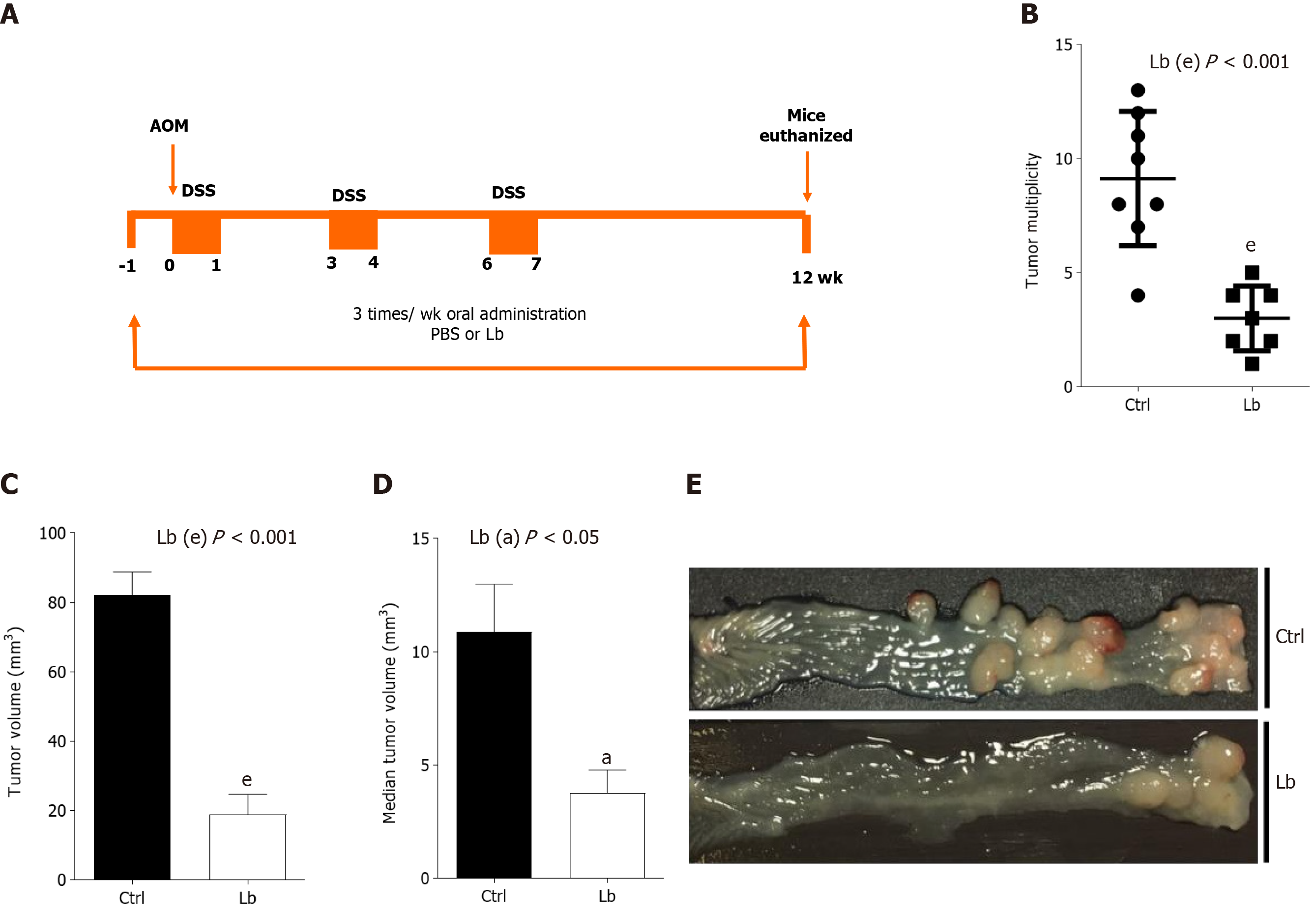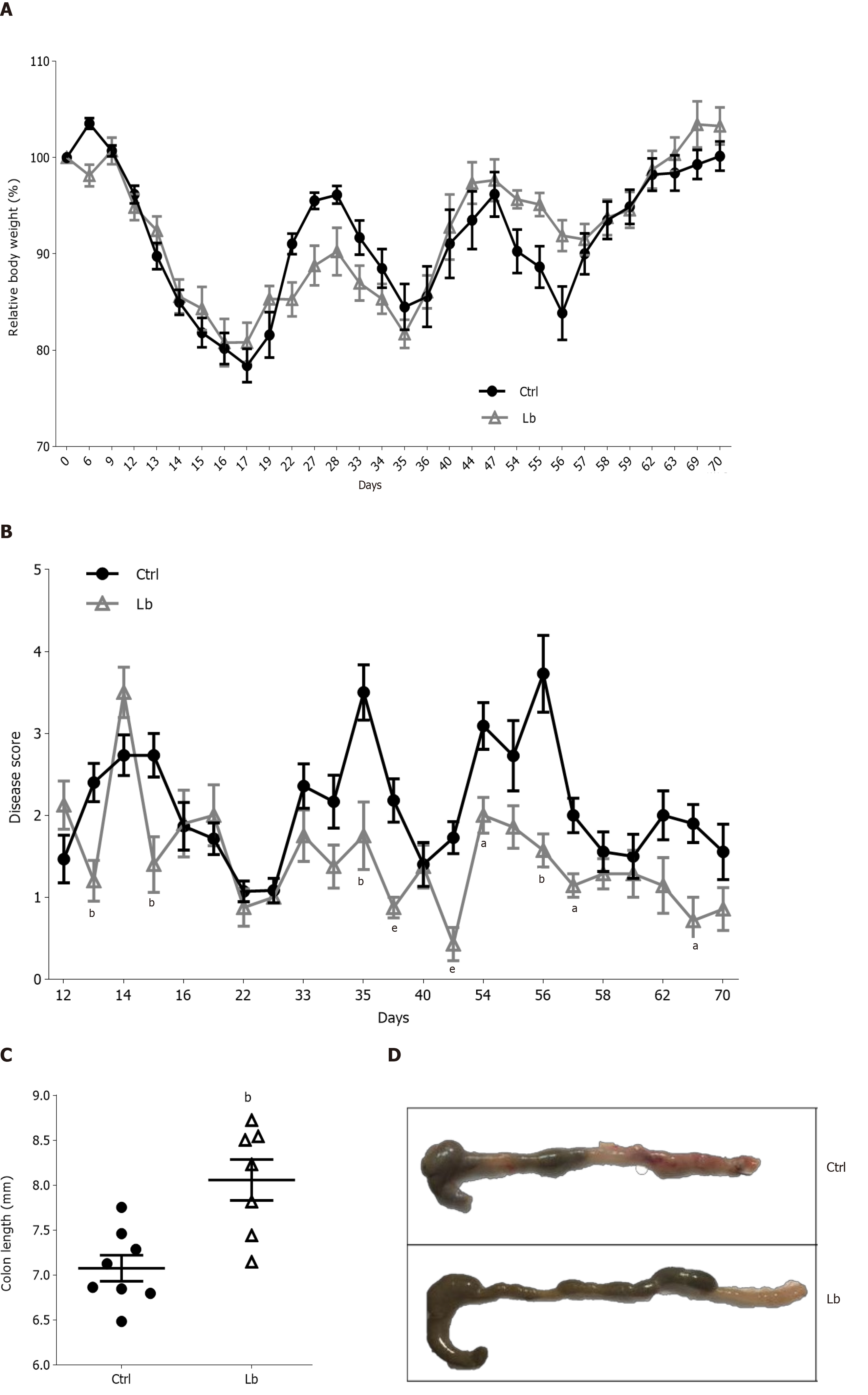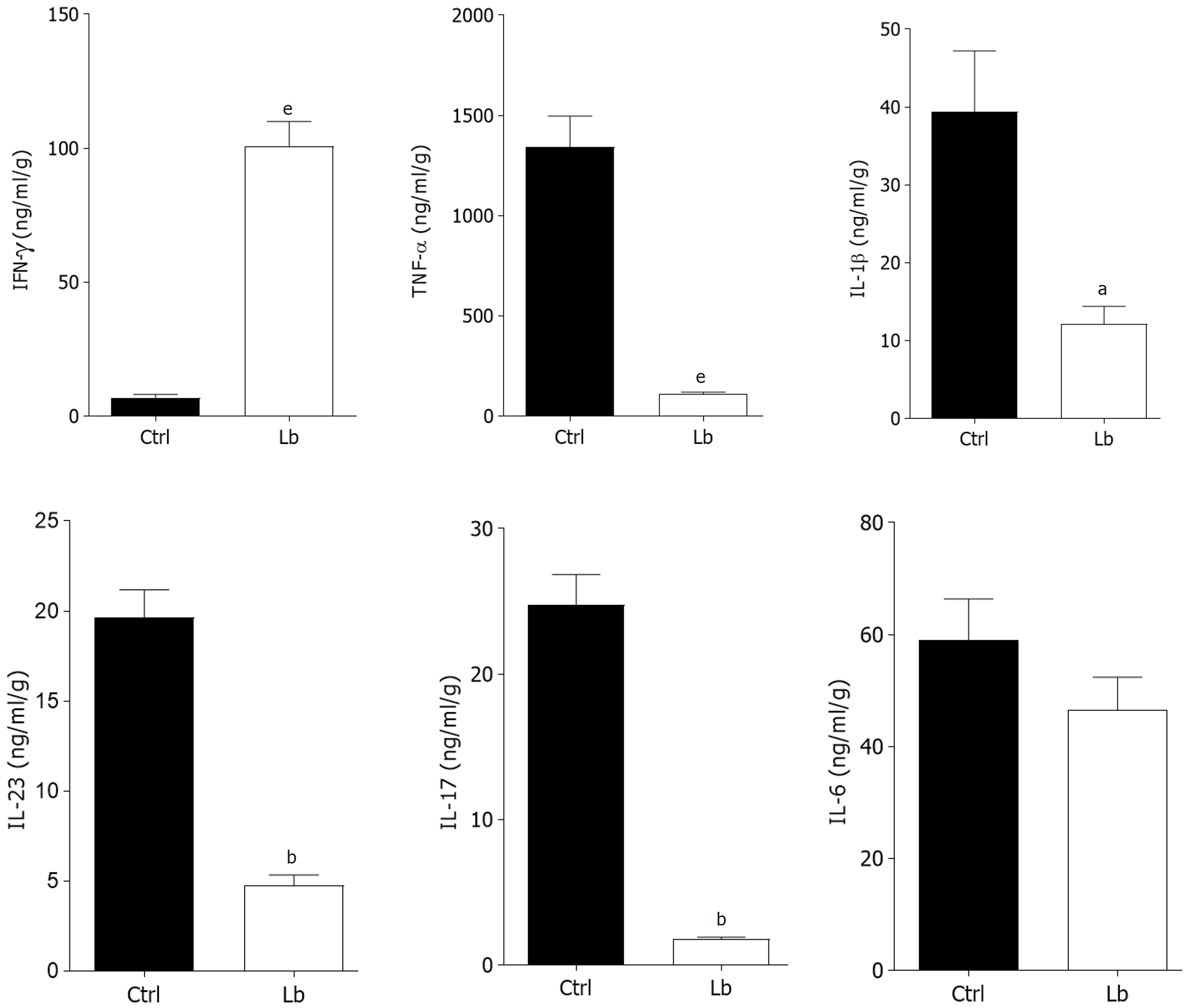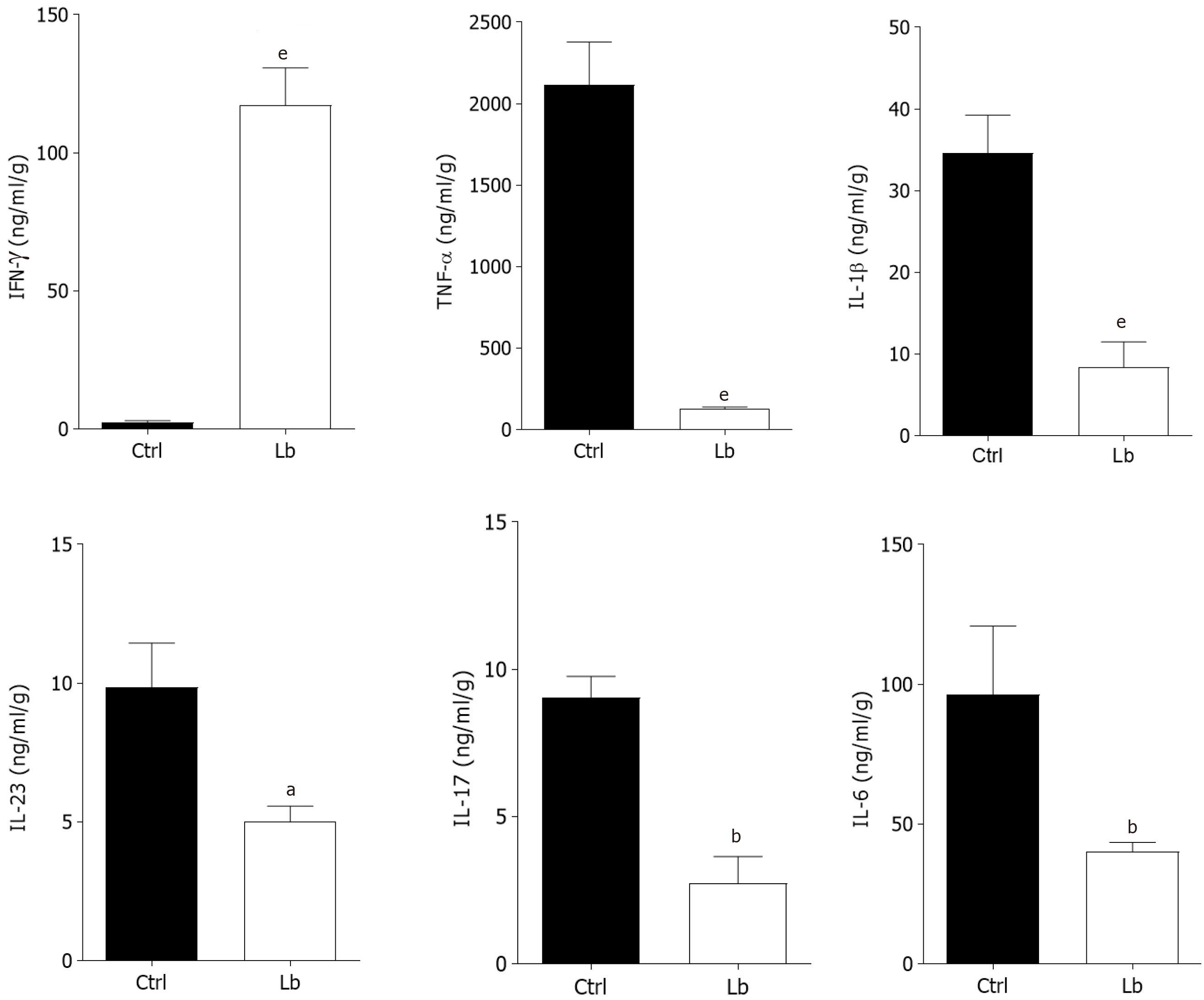Copyright
©The Author(s) 2020.
World J Gastroenterol. Nov 21, 2020; 26(43): 6782-6794
Published online Nov 21, 2020. doi: 10.3748/wjg.v26.i43.6782
Published online Nov 21, 2020. doi: 10.3748/wjg.v26.i43.6782
Figure 1 Lactobacillus bulgaricus inhibits tumor progression in azoxymethene/dextran sulfate sodium-exposed mice.
A: Prior to tumor induction, mice were treated 3 times with PBS or the probiotic by gavage (0.2 mL/mouse) for one week. After that, colitis-associated cancer was induced by intraperitoneal injection of a single dose of azoxymethene (AOM), followed by 3 cycles of 2, 5% dextran sulfate sodium (DSS) in drinking water for one week and normal drinking water for 2 wk; B: After euthanasia at 12th week, colons were longitudinally opened, washed and examined for multiplicity; C: Total tumor volume; D: Mean tumor volume; E: The dimensions of colorectal tumors were measured with pachymeter and the volumes calculated as: (Width)2 × length / 2. Illustrative and endoscopic images of AOM/DSS-induced tumors. aP < 0.05; eP < 0.001 vs controls. AOM: Azoxymethane; Ctrl: Controls; DSS: Dextran sulfate sodium; Lb: Lactobacillus bulgaricus; PBS: Phosphate-buffered saline.
Figure 2 Lactobacillus bulgaricus attenuates intestinal inflammation in azoxymethene/dextran sulfate sodium-exposed mice.
A: Relative body weight of azoxymethene/dextran sulfate sodium-induced mice treated or not with probiotic; B: Disease score determined by a scoring system based on clinical signs, such as weight loss, humid perianal region, presence of diarrhea, blood in the stool or perianal region, hyporreativity and piloerection; C: Colon length was determined using graduated images processed in ImageJ; D: Illustrative imagens of colon extension. Results are expressed as mean ± EPM. aP < 0.05, bP < 0.01, eP < 0.001 vs controls. Ctrl: Controls; Lb: Lactobacillus bulgaricus.
Figure 3 Lactobacillus bulgaricus regulates the production of intestinal proinflammatory cytokines in azoxymethene/dextran sulfate sodium-exposed mice.
Segments of the colon which did not present tumors (inflamed colon) were homogenized and the levels of TNF-α, IL-6, IL- 1β, IL-17, IFN-γ e IL-23 per gram of tissue were determined by ELISA (n = 10 mice per group). Results expressed as mean ± SEM. aP < 0.05, bP < 0.01, eP < 0.001 vs controls. Ctrl: Controls; Lb: Lactobacillus bulgaricus.
Figure 4 Lactobacillus bulgaricus regulates the production of tumors proinflammatory cytokines in azoxymethene/dextran sulfate sodium-exposed mice.
Tumor tissues were homogenized and the concentration of TNF-α, IL-6, IL- 1β, IL-17, IFN-γ e IL-23 per gram of tissue (colon) were determined by ELISA (n = 10 mice per group). Results expressed as mean ± SEM. aP < 0.05, bP < 0.01, eP < 0.001 vs controls. Ctrl: Controls; Lb: Lactobacillus bulgaricus.
- Citation: Silveira DSC, Veronez LC, Lopes-Júnior LC, Anatriello E, Brunaldi MO, Pereira-da-Silva G. Lactobacillus bulgaricus inhibits colitis-associated cancer via a negative regulation of intestinal inflammation in azoxymethane/dextran sodium sulfate model. World J Gastroenterol 2020; 26(43): 6782-6794
- URL: https://www.wjgnet.com/1007-9327/full/v26/i43/6782.htm
- DOI: https://dx.doi.org/10.3748/wjg.v26.i43.6782












